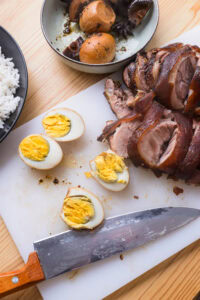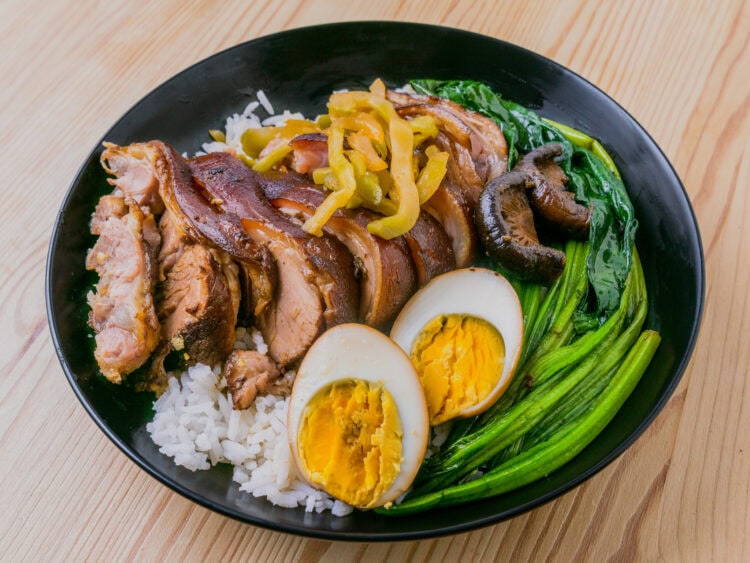A delicious traditional Thai braised pork recipe that will fill your kitchen with the intoxicating aromas of Thai night markets
If there’s one thing I directly associate with Thai cuisine, it’s Khao kha moo (ข้าวขาหมู). Literally “Braised pork with rice”, it’s one of the most popular street food dishes in Thailand. On the street, just like the famous chicken rice, if you look closely, you’ll see it in every corner
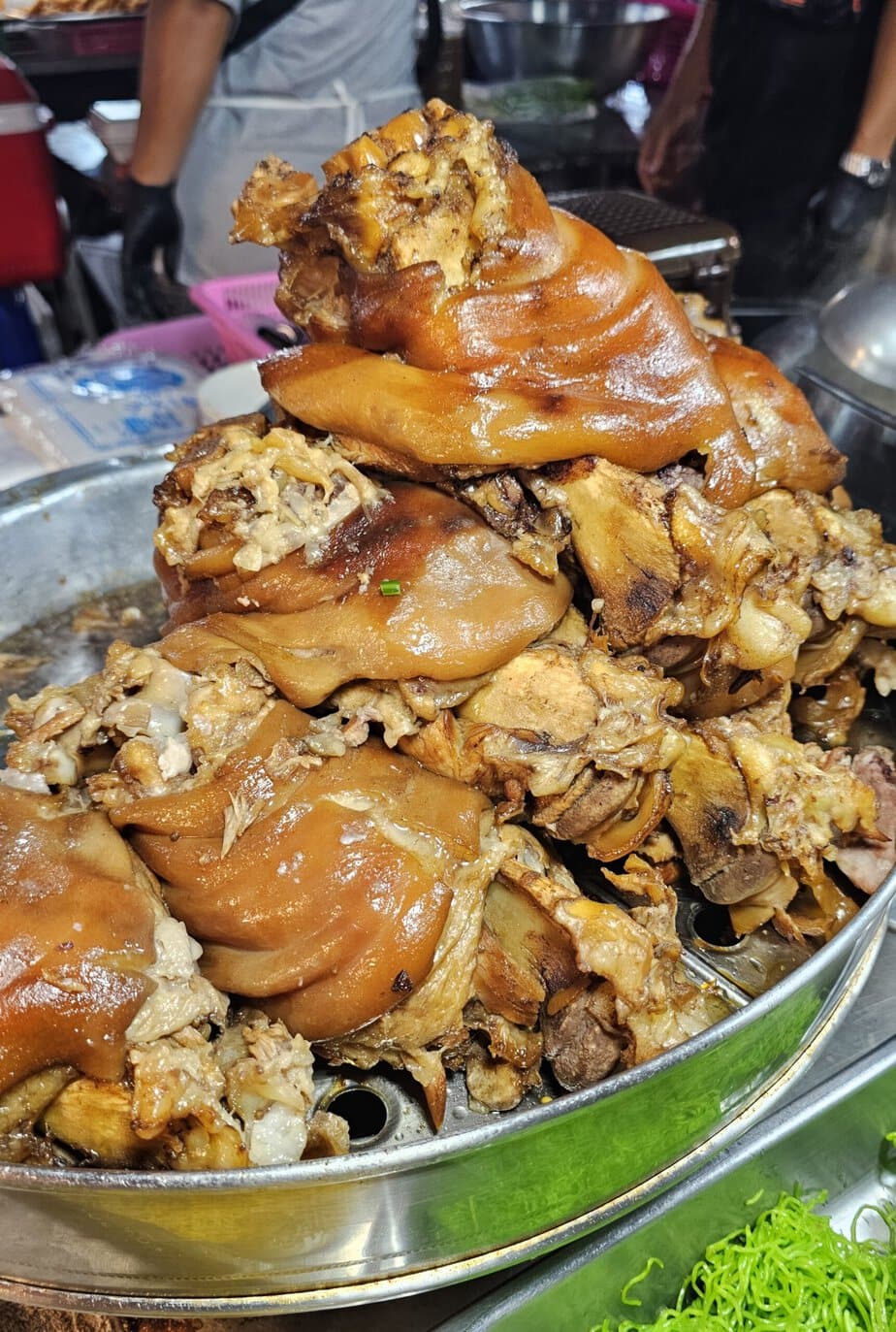
In night markets, it’s hard to miss these huge piles of pork hocks with an simply incredible aroma. In short, the dish is not just braised pork. Like Korean jokbal, it’s served with a whole series of accompaniments and dipping sauces that we’ll discover together in this article.
What is Khao Kha Moo?
So, at this point you know it’s braised pork, but not just that! Kha Moo (ขาหมู) means braised pork, and if you only say that, you’ll get the complete pork hock on your plate, yes indeed. Have I done this more than once? My general practitioner reads my posts, so I’ll refrain from answering.
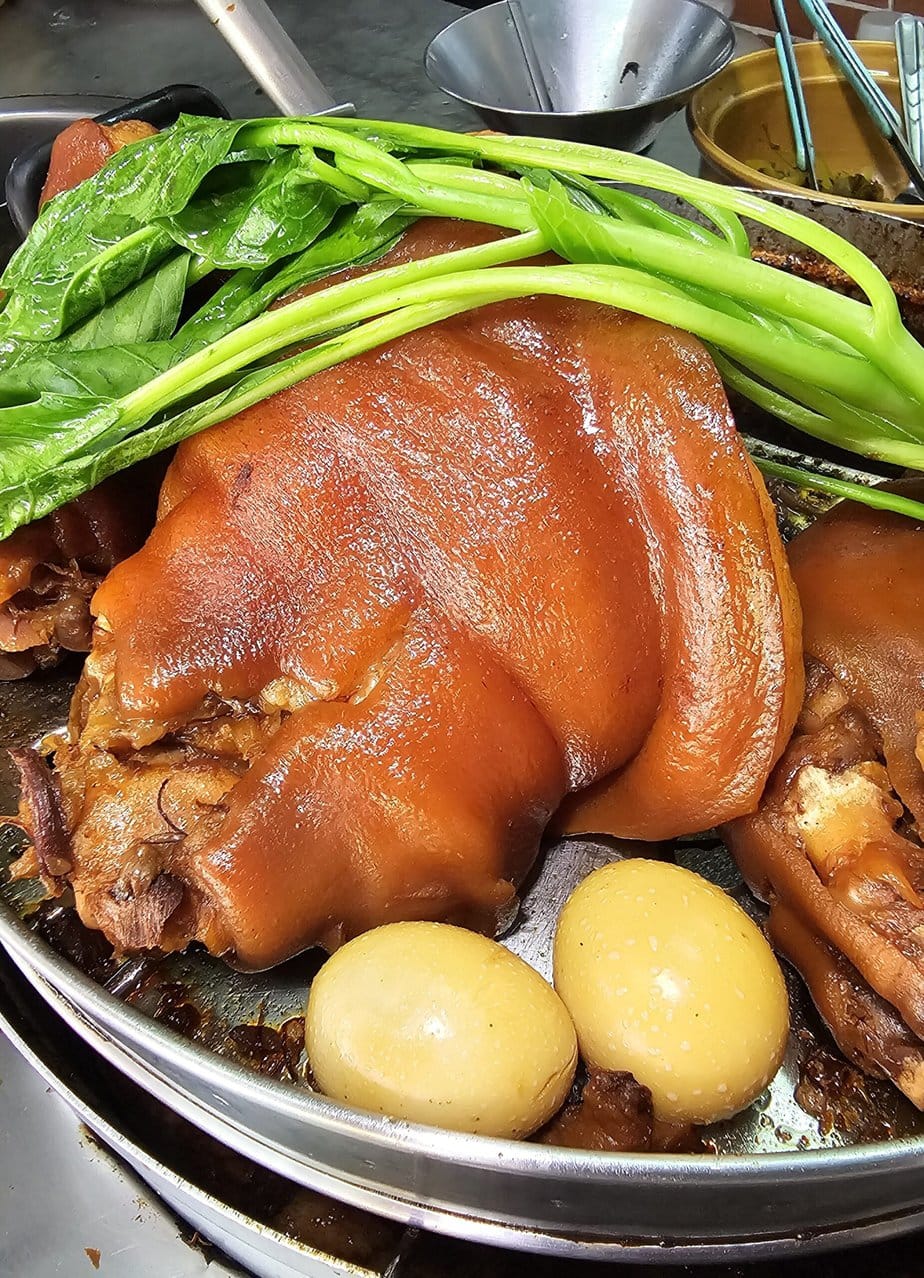
On the contrary, if you ask for the full name of Khao kha moo, you’ll get the complete assortment: Pork braised for long hours in a sweet and salty broth until ultra-tender, rice, a good portion of the broth, dipping sauces, pickled mustard greens, coriander, and pickled eggs.
In short, a more than complete meal!
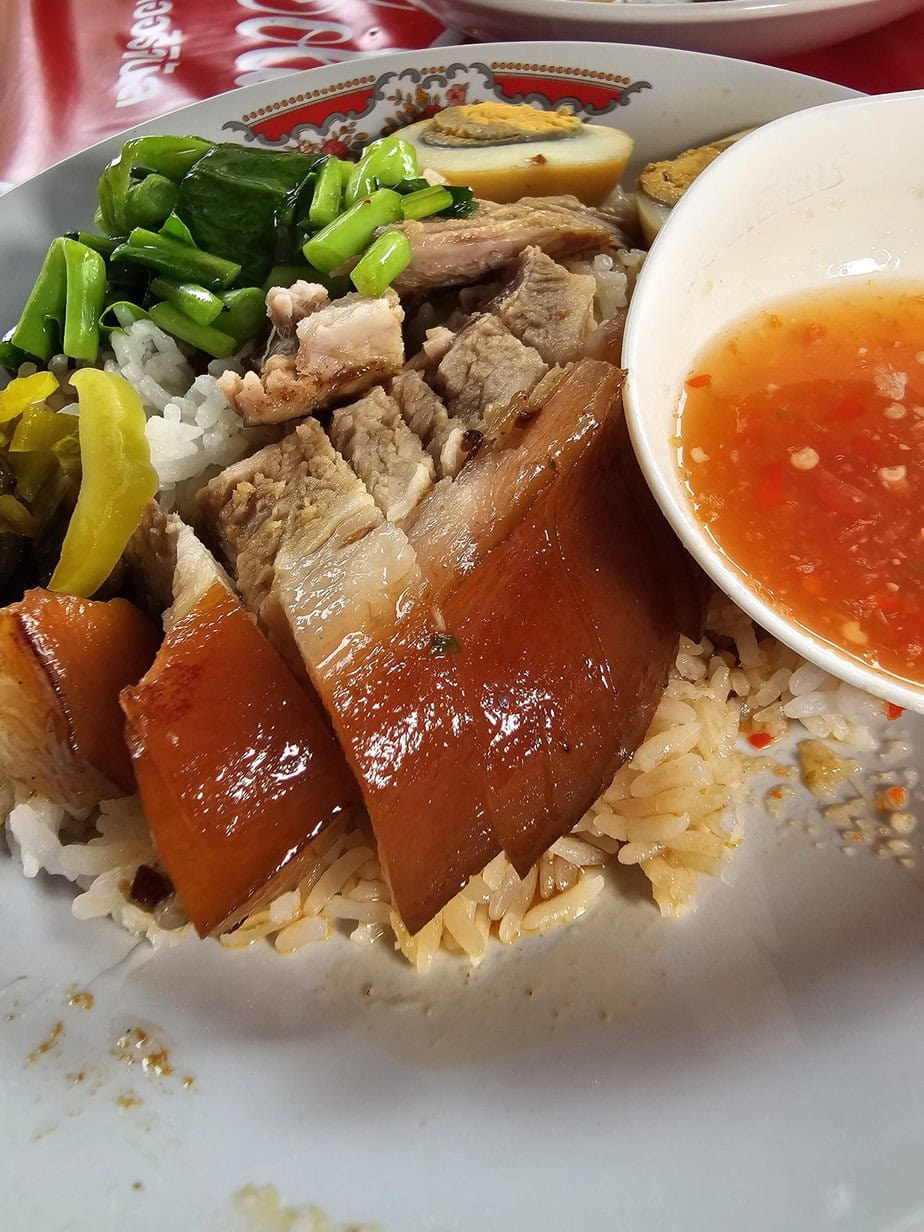
Another little tip, you can ask for a “Kawki” (ข้อกิ) which is a large round cut from the part just above the pork’s foot, the joint. The best description is a pork knuckle round. Full of collagen/gelatin, a bit more meat and less bone than the foot. It’s a nice alternative.
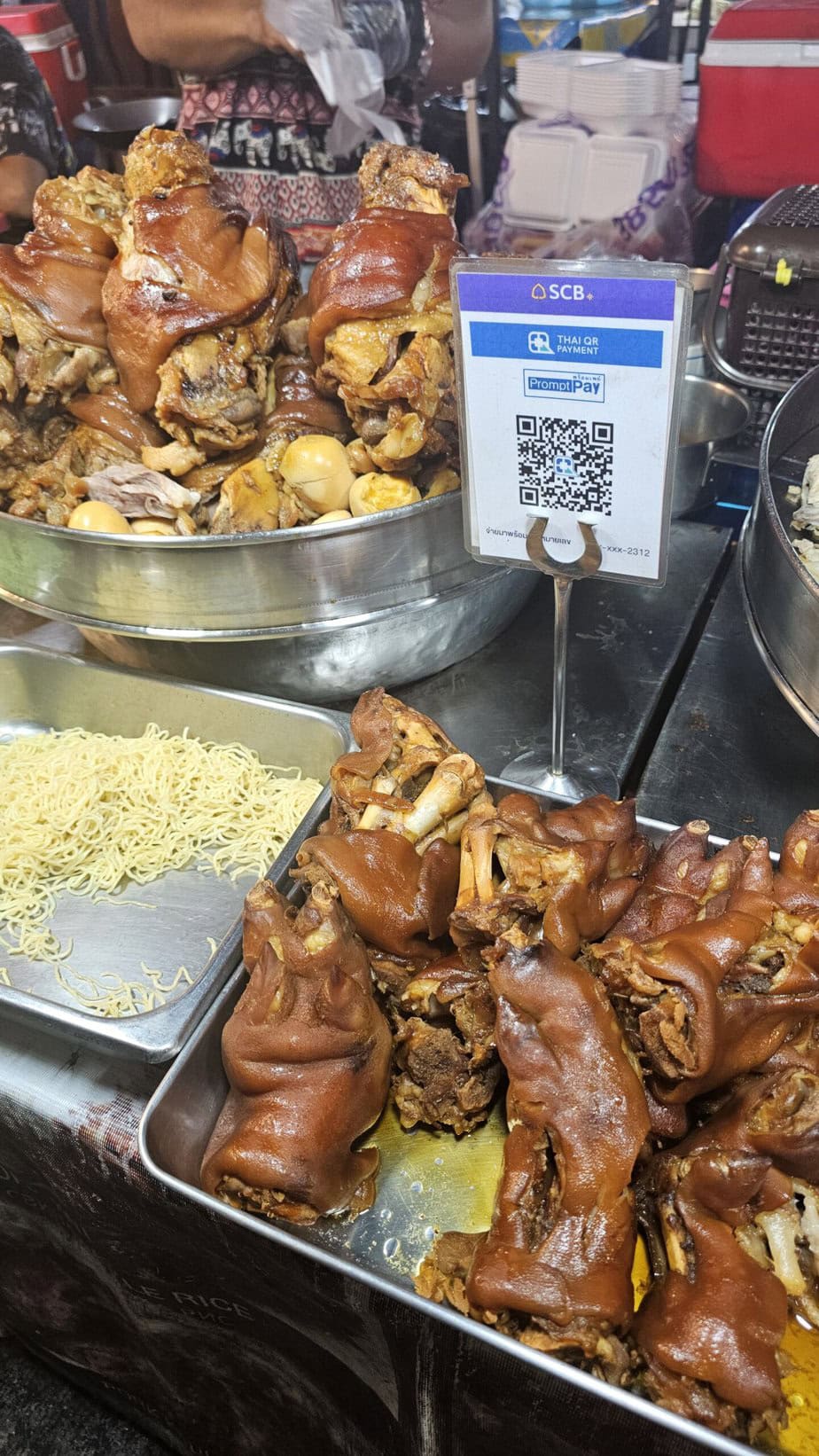
To end this section beautifully, if you love my Chinese braised pork, Vietnamese caramel pork, and other very tender meats, this dish is made for you.
The Main Ingredients of Khao Kha Moo
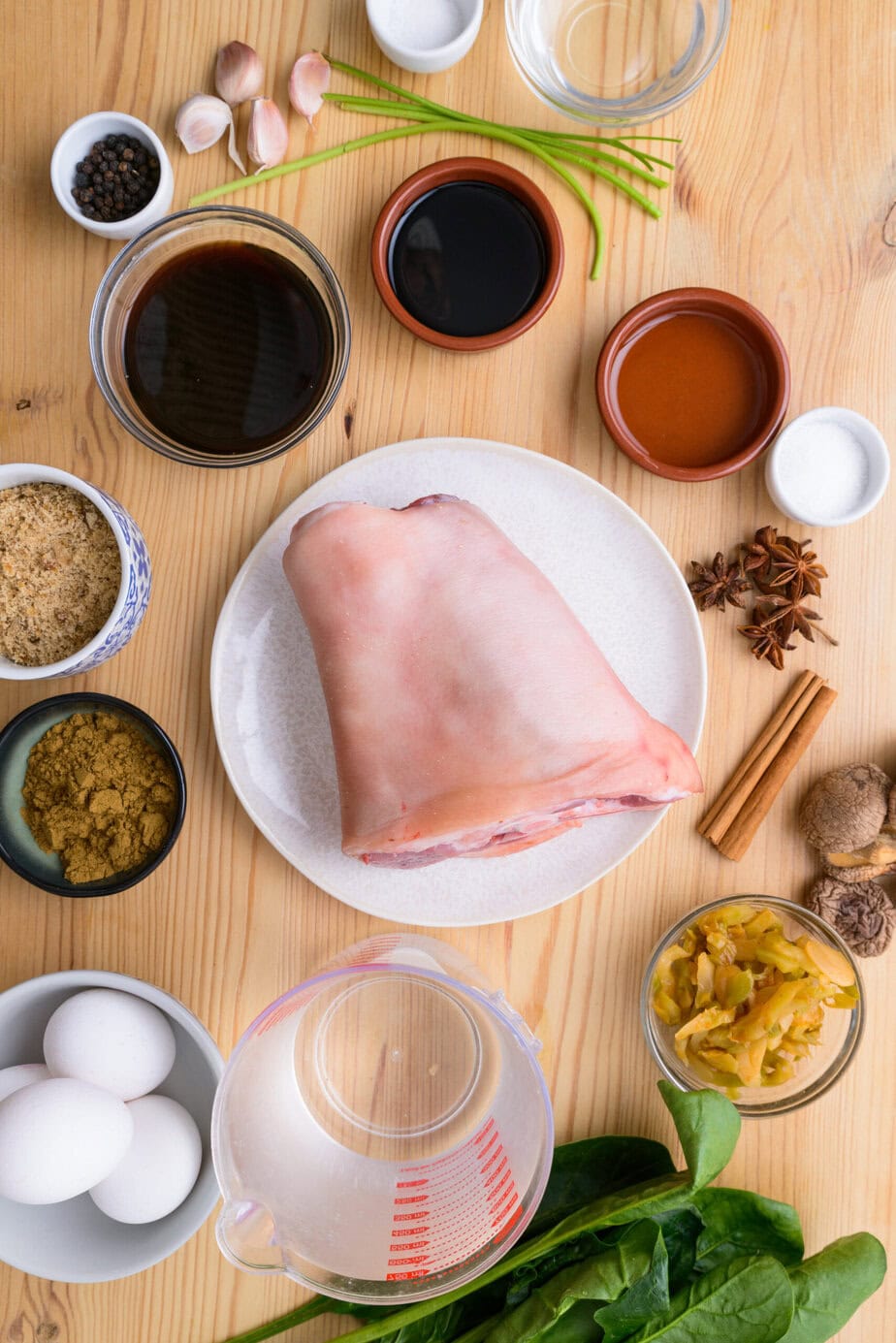
Dark soy sauce: A thicker and darker soy sauce, which brings a rich color and a more pronounced umami flavor to the dish.
Light soy sauce: A more fluid and salty soy sauce, used to season without coloring the preparation too much.
Palm sugar: A sugar with a deep and slightly caramelized taste, which balances the saltiness of the soy sauces and helps caramelize the pork hock. Use coconut sugar instead
Chinese five-spice: A spice blend typical of Chinese cuisine (star anise, cinnamon, cloves, Sichuan pepper, and fennel) that brings warmth and complexity to the dish.
Coriander roots: Typical Thai ingredient, substitute with stems
Star anise: Brings an anise-like and slightly sweet note to the broth.
Chinese cinnamon: Used in sticks to infuse the broth with a sweet and woody flavor.
Shiitake mushrooms: Add a tender texture and umami flavor to the dish after rehydration.
Thai chilies: Can be substituted with hot peppers from elsewhere, or omitted if you can’t handle spicy food
Jasmine rice: Rice with a soft texture, perfect for absorbing the rich sauce of the dish.
Rice vinegar: Brings a touch of acidity to balance the richness of the dish in the Thai garlic sauce.
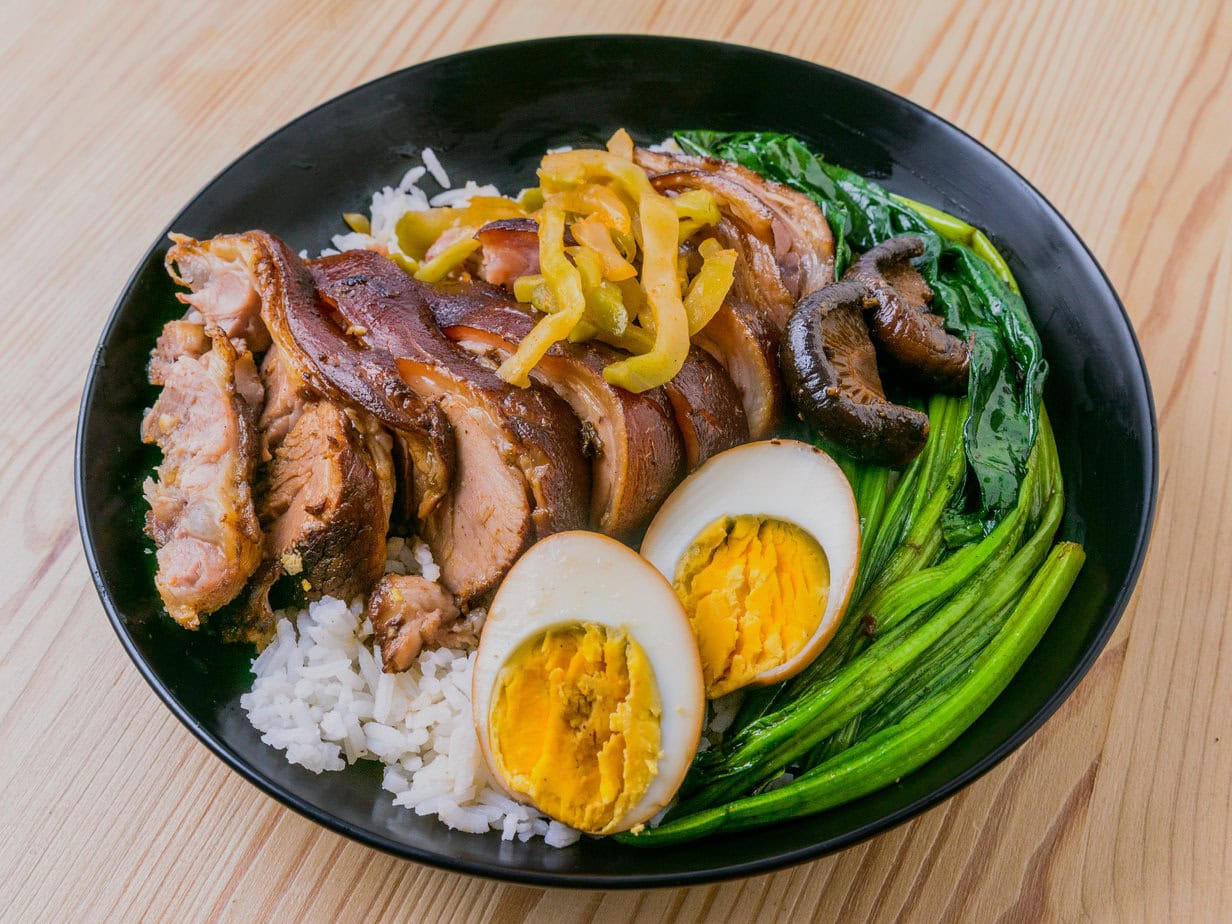
Khao Kha Moo – Thai Braised Pork Leg
Ingredients
- 1 Pork shank thick, about 2-4 lbs
- 2 tablespoons dark soy sauce
- 5 tablespoons light soy sauce
- 8 tablespoons palm sugar or coconut sugar
- 2 teaspoons salt
- 2 tablespoons neutral oil
- 2 tablespoons of Chinese five-spice powder
- 1.5 L water
Aromatics
- 4 star anise
- 2 cinnamon sticks
Spice Paste
- 4 coriander roots substitute with coriander stems without leaves
- 4 cloves garlic
- 1 teaspoon of black peppercorns
- 0.25 teaspoon salt
- 2 tablespoons water for initial cooking
Side dishes
- 4 Hard-boiled Eggs peeled
- Choy sum added to taste
- Pickled Mustard Greens added to taste
- 6 shiitake mushrooms dried
- Jasmine rice steamed
Thai Garlic Sauce
- 3 tablespoons garlic Finely chopped
- 2 coriander roots finely minced, use coriander stems without leaves instead
- 2 Thai chilies small size, finely minced
- 2 tablespoons rice vinegar
Instructions
Preparation
- Soak dried mushrooms in water for at least 30 min.6 shiitake mushrooms
- Soak star anise and cinnamon for 10 minutes. Drain everything.4 star anise, 2 cinnamon sticks
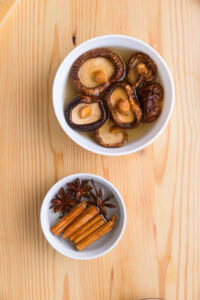
- In a mortar, crush the paste ingredients until you get a coarse paste.4 coriander roots, 4 cloves garlic, 1 teaspoon of black peppercorns, 0.25 teaspoon salt
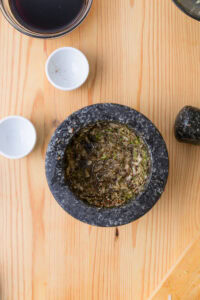
- Coat the pork hock with oil.1 Pork shank, 2 tablespoons neutral oil
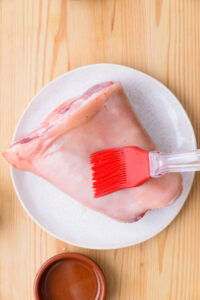
- Heat a generous amount of oil in a large pot or wok over medium heat. Sauté the paste for 1 min, stirring well.
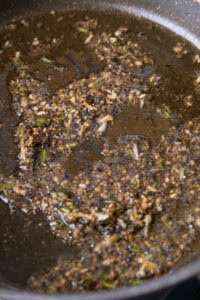
- Add coconut sugar and tablespoons of water, mix until everything is well melted together.8 tablespoons palm sugar, 2 tablespoons water
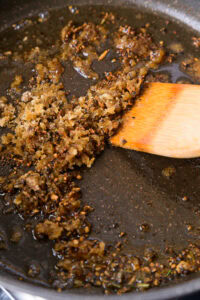
- Add the 5 spices, and mix well until the mixture is homogeneous.2 tablespoons of Chinese five-spice powder
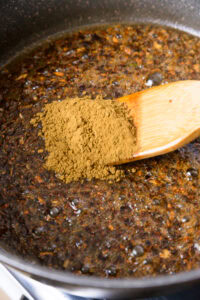
- Add the pork hock. Cook for 5 minutes, turning often.
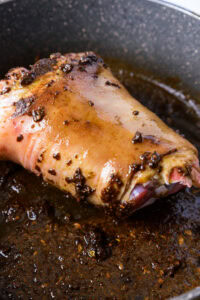
- Add water until it’s 3/4 covered.1.5 L water
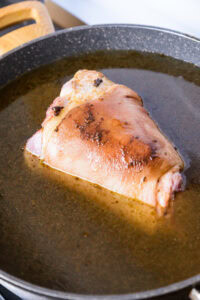
- Add cinnamon sticks, star anise, and pre-soaked mushrooms.
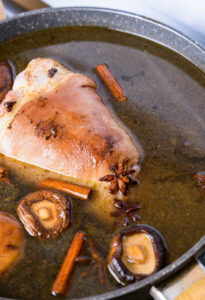
- Add light soy sauce, dark soy sauce, and salt.2 tablespoons dark soy sauce, 5 tablespoons light soy sauce, 2 teaspoons salt
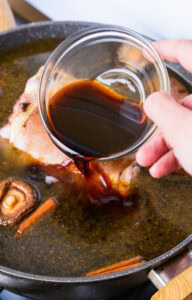
- Cover and bring to a high heat until it’s bubbling vigorously, then reduce to low heat.
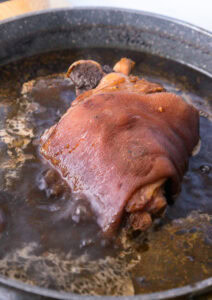
- Simmer for 3 hours on low heat, checking frequently to add water.
- Cut rehydrated mushrooms in half, remove stems.
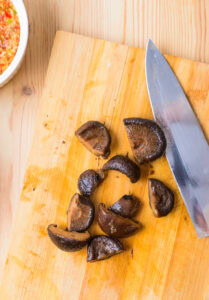
- At 2 and a half hours of cooking, add hard-boiled eggs.4 Hard-boiled Eggs
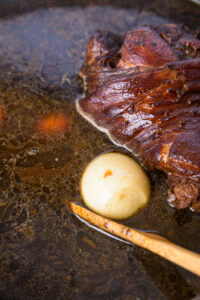
- Put the mushrooms back in.
- Once 3 hours have passed, remove the meat to slice for the plates.
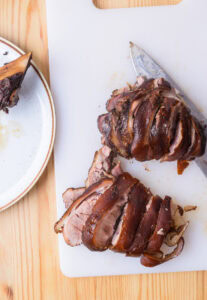
- Leave the eggs and mushrooms to simmer in the broth until you’re ready to serve.
Thai Garlic Dipping Sauce
- In a mortar, pound the garlic, coriander roots, Thai chilies until you get a coarse paste.3 tablespoons garlic, 2 coriander roots, 2 Thai chilies
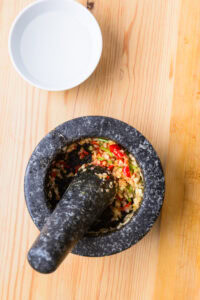
- Put in a small bowl and mix with vinegar.2 tablespoons rice vinegar
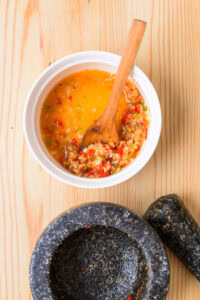
Plating
- Remove eggs and mushrooms from the broth.
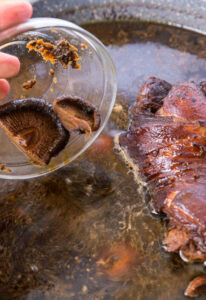
- Turn to high heat and reduce the sauce by half after tasting to concentrate it.
- Blanch the choy sum in the broth and cut into 1.5-2 cm pieces.Choy sum
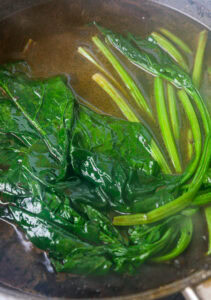
- Serve immediately with steamed rice. Accompany with pickled mustard greens, sliced mushrooms, sliced eggs, preserved mustard, and enjoy.Jasmine rice, Pickled Mustard Greens
